How to Hide and Disable All Items on the Desktop in Windows 10?
Desktop icons are small pictures that represent folders, files, and applications. The newly installed Windows 10 will have at least one icon of Recycle Bin. Most desktop icons will be shortcuts to frequently used files and programs. Sometimes the user would want to hide these icons for a screenshot or hide them from the standard users. Depending on the situation, there are various ways to hide the icons on the desktop. In this article, we will be showing you those methods through which you can easily hide or disable the icons on the desktop.

Hiding and Disabling All Items on the Desktop
There are several methods through which you can hide and disable all the items on the desktop. The easiest and default method will be through the context menu. This is best used when you want to temporarily hide the icons for a screenshot or recording screen. It requires two clicks to hide and unhide it back pretty quickly. The other methods are used when the administrator wants to keep the desktop clean. The users will also be unable to right-click on the desktop through these methods. Depending on what you want to achieve by hiding the icons on the desktop, choose the method below that is best for you.
Method 1: Using the Desktop’s Context Menu
This is the most common and the default method for hiding icons on the desktop. Just right-click anywhere on the desktop, choose View and then click on Show desktop icons. This will hide all the icons on the desktop.
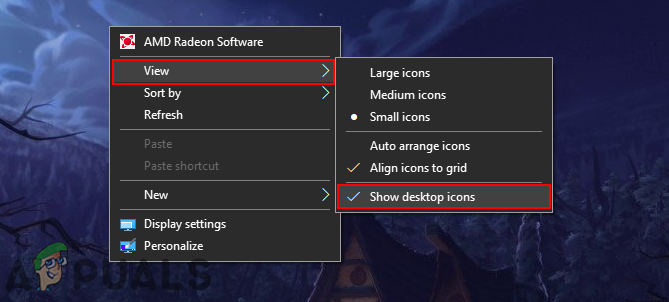
You can also unhide the icons again by clicking on the same Show desktop icons option.
Method 2: Using the Local Group Policy Editor
The Local Group Policy Editor is a Windows feature through which users can manage and configure the Windows operating system. Administrators can use the Group Policy Editor to allow or prevent many different settings for Windows. The policy setting that hides or disable the desktop icons can be found in the user category of Group Policy Editor. By enabling this policy all the icons will disappear and users will be unable to right-click on the desktop.
However, the Local Group Policy Editor isn’t available in the Windows Home Editions. If you are using Home Edition Window, then skip this method and try the Registry Editor Method.
If you have the Local Group Policy Editor on your system, then follow the below guide:
- Hold the Windows key and press R to open a Run dialog. Then, type “gpedit.msc” and press the Enter key to open the Local Group Policy Editor.
Note: Choose Yes for the UAC (User Account Control) prompt.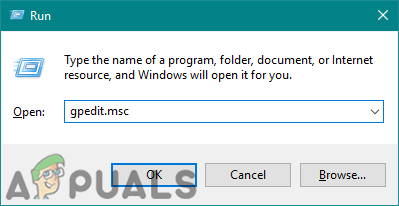
Opening Local Group Policy Editor - Navigate to the following setting in the User Configuration of the Local Group Policy Editor:
User Configuration\Administrative Templates\Desktop
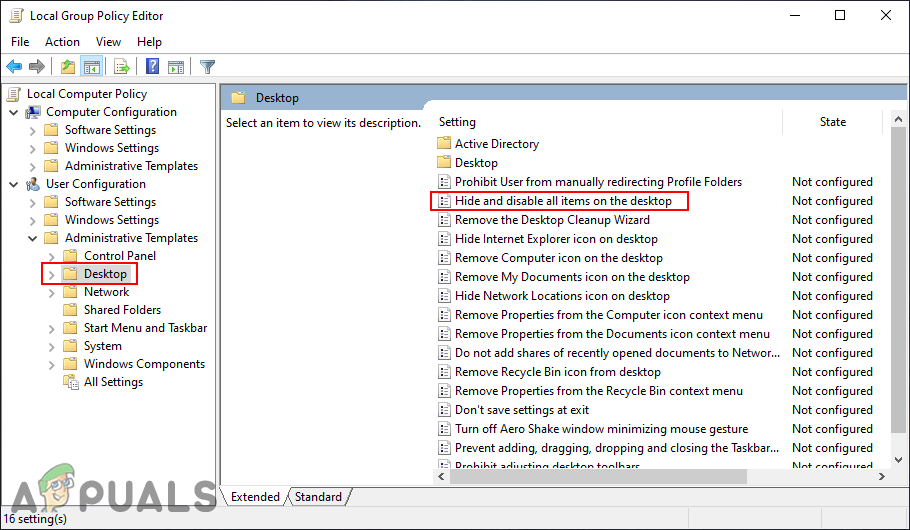
Navigating to the policy setting - Double-click on the setting named “Hide and disable all items on the desktop“. It will open in a new window, change the toggle from Not Configured to Enabled. Click on the Apply and Ok button to save the changes.

Enabling the setting - Once the setting is enabled, make sure to restart the computer to see the changes. After the restart, all the icons will disappear and you will be unable to right-click on the desktop.
- To unhide the desktop icons, just change the toggle back to Not Configured in the Local Group Policy Editor setting.
Method 3: Using the Registry Editor
The Registry Editor method works the same as the Local Group Policy Editor method. Any changes done through the Local Group Policy Editor will automatically update the same setting in the Registry Editor. Some of the values of the key will be missing and the users are required to create them manually to make it work. This method also hides all items and disable the right-click on the desktop. Follow the below steps to try it out:
- Press the Windows + R keys together to open a Run dialog. Now type “regedit” in it and press the Enter key to open the Registry Editor. Choose the Yes option for UAC (User Account Control) prompt.
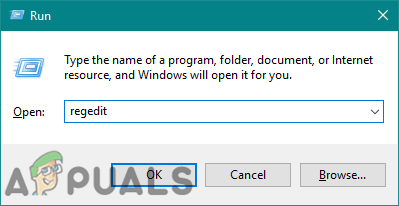
Opening the Registry Editor - In the Registry Editor left pane, navigate to the following key:
HKEY_CURRENT_USER\Software\Microsoft\Windows\CurrentVersion\Policies\Explorer
- In the Explorer key, right-click on the right pane and choose the New > DWORD (32-bit) Value option. Name the newly created value as “NoDesktop“.
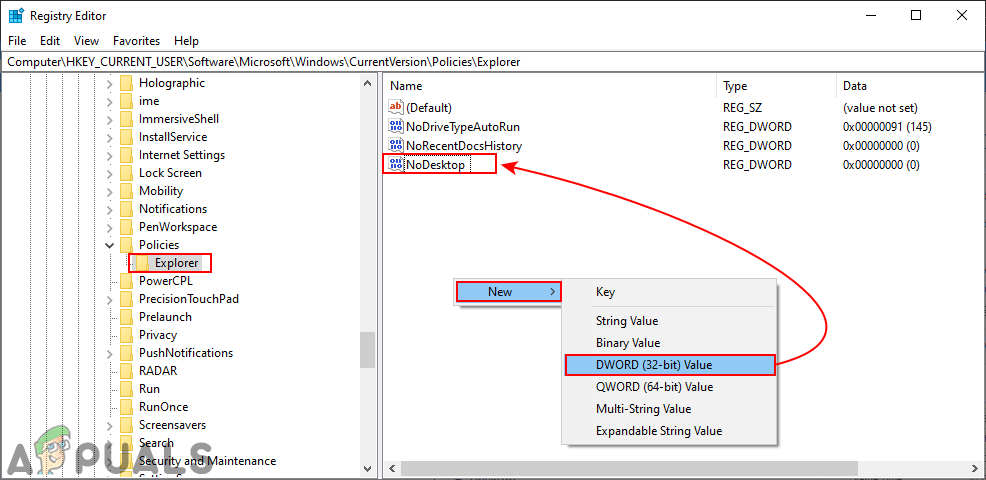
Creating a new value - Double-click on the value NoDesktop and change the value data to 1.
Note: Value data 1 is for enabling the setting and value data 0 is for disabling the setting.
Changing value data of value to enable it - Finally, restart the computer to see the changes through this setting. All icons on the desktop will disappear and the user will be unable to right-click anywhere on the desktop.
- To disable this setting and unhide the shortcuts, simply change the value data to 0 or delete the NoDesktop value in the registry editor. It will disable the setting and everything will be back to normal.





